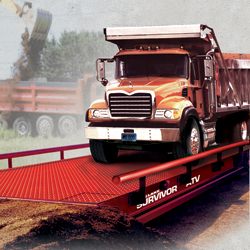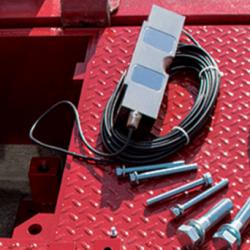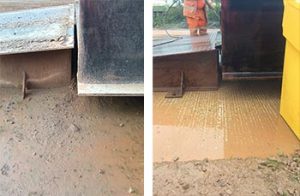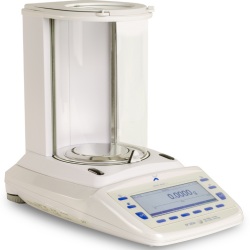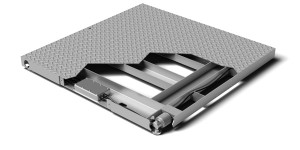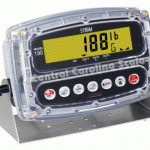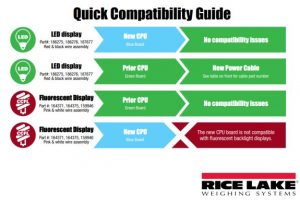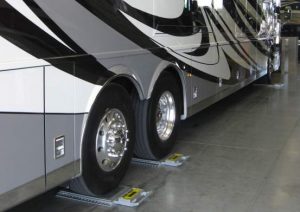No two truck scale projects are exactly alike, so a great place to start is to provide an outline of what you would like to have installed at your facility. You might obtain this information from talking with colleagues, etc…
Then, ask lots of questions, and listen carefully to the answers. Sometimes things are pretty straightforward and other times…. not so much. Listen to your experienced scale sales person in order to fully understand the unique application requirements that usually exist when you are looking to install a certain truck scale in a certain location. We touched on the subject of truck scale prices a few months back.
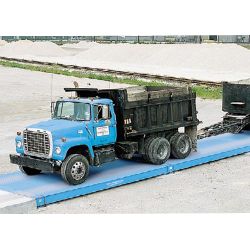
The following list will help to ensure that you have a very good understanding of what is involved in choosing the right truck scale, along with all the site particulars.
Some “Site and Installation” considerations to look at when it comes to choosing a truck scale.
1. What is the soil’s bearing capacity?
2. Is there adequate drainage for excessive storm water and if applicable, flow of snow melting? (critical consideration, especially for scales installed in a pit foundation)
3. Are there any natural sub-surface obstructions to deal with such as bedrock, sink holes, boulders, high water tables?
4. Are there any man-made obstructions to consider such as gas lines, power lines, water lines, sewers and drains?
5. If applicable, what is the frost line?
6. Where will the scale house or unattended kiosk be located?
7. Have local authorities approved plans for the foundation and approaches (and ramps if above grade)?
8. How will vehicle speeds be controlled when entering and exiting the scale?
9. Are there any concerns with vehicles backing up onto public streets or highways during peak periods of scale usage?
10. Does there need to be a staging/parking area during peak scale usage periods?
11. Is there sufficient area for a bypass around the scale(s)?
12. What is the turning radius of the largest vehicles that will access the scale?
13. Are there any plans for overhead filling of vehicles while parked on the scale?
14. What if plant capacity increases and a single truck scale becomes an operational bottleneck?
15. Does the location offer enough room to expand with another scale?
16. How will you address the effects of heavy rainfalls or snowfalls?
17. Are there provisions to deal with downtime for scale maintenance or repair?
Below are some “Truck Scale” Product impacting considerations to look at.
1. Steel deck or concrete deck?
2. Platform length and width needed to accommodate vehicles that will use the scale? (go out and measure the trucks, just to be certain)
3. How many vehicles will be weighed per day, per month, per year?
4. Will they be weighed both empty and loaded?
5. Anticipated dual tandem axle (DTA) weights?
6. List of all vehicle types that will use the scale?
7. Are all axle loads legal for highway travel or are there some heavier axle loads such as found on some yard-only vehicles?
8. Will tag/pusher axles be lowered or raised when vehicles are crossing the scale?
9. Will the scale be used in both directions or one direction only?
10. How much scale under-clearance is required by local weights and measures?
11. If the scale is going to be above ground, are there requirements for a guide rail system that is attached to the platform?
12. Do you have involvement with Mine Safety and Health Administration (MSHA)?
13. If the scale is going into a pit foundation, how will the pit be accessed?
14. If manholes are required in the scale platform, are there specific locations where they need to be to line up with drains or sump pits?
15. Are there any corrosive chemicals that the scale will be exposed to?
16. Do you have any special paint requirements? (custom color or coating system with enhanced protection?)
17. Will the scale surface typically have gravel/sand/debris sitting on it or will it be kept reasonably clean?
18. How long do you expect the scale to last?
By answering these questions and listening carefully to your scale professional, you can gain a clear understanding as to what type of truck scale you need along with any features or upgrades that may be recommended.
Our experienced staff can provide some examples of do’s and don’ts from other projects along with many success stories. With any large vehicle scale purchase, you will want to factor in the other costs as well when comparing products. Things to consider include; lead time, freight costs, installation and calibration costs.
In addition to standard payment choices, we also have some lease programs available as well. Call (919) 776-7737 or fill out our Request a Quote form on our website.

